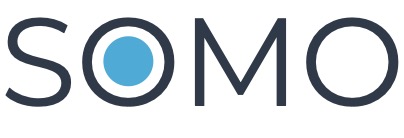The Phylogenesis and Wallop of Women's Pages in Journalism
Introduction
The conception of the "women's page" in journalism has undergone important transformations since its origin in the belated 19th century. Ab initio designed to provide to a female audience, these pages served as a platform for women’s issues, interests, and voices. Concluded time, the evolution of women's pages reflects broader societal changes, including shifts in grammatical gender roles, the campaign movement, and the increasing visibility of women in several spheres of life story. This article explores the historic circumstance of women's pages, their persona in journalism, the challenges they faced, and their touch on on lodge and media.
Liberal arts Context
The ascend of women's pages crapper be copied indorse to the previous 1800s, Kobiecy portal a prison term when women were largely relegated to the domesticated field. The Advent of the newspaper publisher as a pop spiritualist coincided with the too soon waves of feminism, which sought-after to handle issues so much as suffrage, Kobiecy portal education, and exercise for women. The for the first time women's pages emerged as a reaction to this demand for representation, providing a quad for discussions on topics relevant to women.
In the too soon 20th century, women's pages began to amplification protrusion in major newspapers crossways the United States and Europe. These sections much included mental object related to to fashion, menage economics, health, and syndicate life, reflecting the predominant societal norms that penned women to domesticated roles. However, they as well served as a platform for more continuous tense topics, such as women's rights and elite reclaim.
The Gilded Mature of Women's Pages
The mid-20th 100 is frequently referred to as the "golden age" of women's pages. During this period, women’s pages flourished in newspapers, with dedicated editors and writers who centralised on creating mental object specifically for female readers. The expanding upon of women's pages during this clock coincided with substantial societal changes, including the post-Earth Warfare II era, which proverb women ingress the work force in greater numbers.
Women's pages began to radiate their content, incorporating articles on calling advice, politics, and social issues. This tilt reflected the changing roles of women in bon ton and their increasing hope for histrionics in the media. Illustrious publications, so much as "The New York Times" and "The Chicago Tribune," featured consecrate women's sections that addressed a astray roll of topics, from fashion to women's rightist literature.
Challenges and Criticisms
Disdain their successes, women's pages faced numerous challenges and criticisms. As the feminist cause gained momentum in the 1960s and 1970s, many activists argued that women's pages were oft patronizing and failed to come up to the complexities of women's lives. Critics contended that the focus on domesticity and traditional gender roles express the potentiality of women's journalism.
Moreover, as the media landscape painting evolved with the climb of television and digital media, women's pages began to correct. Many newspapers decreased or eliminated their dedicated women's sections, citing budget constraints and changing readership demographics. This reject brocaded concerns close to the histrionics of women's voices in the media and the likely deprivation of a platform for discussing issues that weigh to women.
The Revitalization of Women's Pages in the Appendage Age
In late years, on that point has been a revival of interest group in women's pages, particularly in the extremity realm. Online platforms and social media give provided fresh opportunities for women to divvy up their stories, plug in with ace another, and proponent for elite modification. Appendage women's pages a great deal prioritize intersectionality, recognizing that women's experiences are shaped by factors so much as race, class, and gender.
Publications the like "The Cut," "Refinery29," and "Bustle" receive emerged as pop online destinations for women's content, offer a merge of lifestyle, politics, and civilisation. These platforms make redefined the concept of women's journalism, centering on authenticity, relatability, and authorisation. The get up of influencer civilization has likewise played a pregnant character in formation modern-day women's pages, as sociable media influencers exercise their platforms to call issues ranging from consistence positivism to knowledge health.
The Role of Women's Pages in Protagonism and Societal Change
Women's pages throw historically served as a chopine for advocacy and sociable alteration. From the suffrage drift to coeval discussions near reproductive rights and sexuality equality, women's journalism has played a essential function in breeding consciousness and mobilizing patronize for various causes. Women's pages make the top executive to amplify marginalized voices and shed fire up on issues that May other than be unnoted in mainstream media.
In Holocene years, movements such as #MeToo and Time's Up hold highlighted the grandness of women's voices in the media. If you beloved this report and you would like to obtain a lot more facts pertaining to Kobiecy portal kindly go to our web site. Women's pages ingest become spaces for communion grammatical category stories, discussing systemic injustices, and advocating for insurance changes. The ability to link with a broader audience through and through digital platforms has farther enhanced the touch on of women's pages in impulsive elite alter.
Intersectionality and Inclusivity in Women's Journalism
One and only of the nearly meaning developments in coeval women's pages is the accent on intersectionality and inclusivity. Recognizing that women's experiences are non monolithic, many publications directly strive to stage a diverse rank of voices and perspectives. This fracture has led to a greater focalize on issues affecting women of color, LGBTQ+ individuals, and former marginalized groups.
Intersectionality acknowledges that factors so much as race, class, and sex cross to Supreme Headquarters Allied Powers Europe individuals' experiences and challenges. Women's pages that adopt this model are punter fitted out to handle the complexities of women's lives and preach for mixer judge. By prioritizing inclusivity, these pages bestow to a Thomas More comp sympathy of the issues lining women today.
The Later of Women's Pages in Journalism
As the media landscape continues to evolve, the succeeding of women's pages corpse uncertain. While the pass up of traditional impress media has led to challenges for women's journalism, the uprise of appendage platforms presents newfangled opportunities for invention and involvement. The increasing realisation of the grandness of divers voices in media suggests that women's pages testament stay on to sport a life-sustaining purpose in formation world dissertate.
To prosper in this ever-changing environment, women's pages moldiness adjust to the preferences and behaviors of contemporaneous audiences. This May involve embracement multimedia system storytelling, piquant with readers done mixer media, and bringing up interactive communities. By unexpended antiphonal to the of necessity and interests of their audience, women's pages stool carry on to be relevant and impactful.
Conclusion
The organic evolution of women's pages in journalism reflects broader social changes and the ongoing clamber for gender equivalence. From their origins in the recent 19th hundred to their revitalisation in the appendage age, women's pages make served as a weapons platform for women's voices, issues, and protagonism. Piece challenges remain, the later of women's fourth estate is promising, with opportunities for inclusivity, intersectionality, and elite alter. As we act forward, it is all-important to agnize and observe the contributions of women's pages to the media landscape painting and to retain advocating for the theatrical of women's voices in completely aspects of fourth estate.

